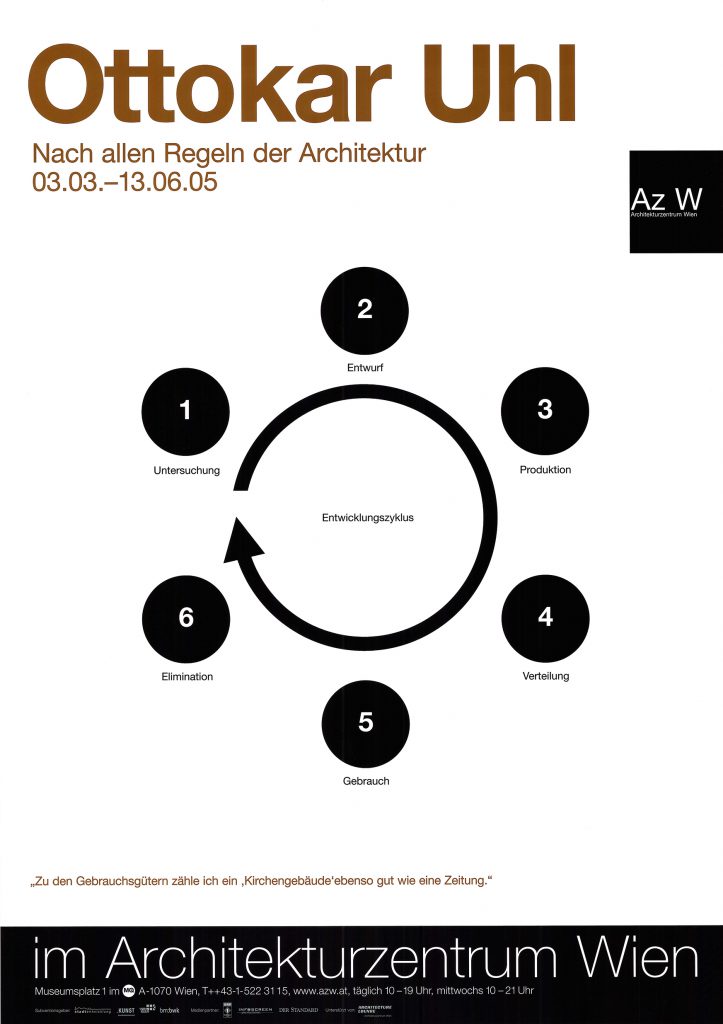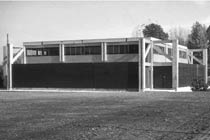Exhibition
Ottokar Uhl
After the Rules of Architecture

Exhibition poster: Ottokar Uhl
© Architekturzentrum Wien, graphic design: LIGA: graphic design
Ottokar Uhl (born in 1931) is considered one of the major protagonists of Austrian architecture in the second half of the 20th century. His work focused on innovation in church building and the development of participatory models for housing developments.
With projects like the demountable church on Siemensstraße in Vienna (1960-63) or the conversion of the Ebendorferstraße student chapel, 1010 Vienna (1958), he set new standards for sacral buildings. The Feßtgasse apartment building, 1160 Vienna (1973-80) became a pioneering project for participative developments in Vienna.
Uhl was interested in building processes in which the users participated, exploring the structural possibilities and materials. The path from a specialist culture to a culture of those affected taken in his work has always been of contemporary relevance, and still is.
With a focus on the central themes in the oeuvre of Ottokar Uhl, the exhibition attempts to provide a contemporary look at his work as well as a survey of its problematic aspects in a historical context. The exhibition shows a dialogue in two formats:
One format is a monograph which draws on the complete archiving of the material put at the disposal of the Architekturzentrum Wien with his estate in 2001.
The other part of the exhibition is concerned with the presentation of his work and is, though, also supplemented by an independently legible element in the form of a montage of images and brief texts showing the main points of reference.
A catalogue is being published to accompany the exhibition with 225 pages, numerous illustrations.
Published by the Architekturzentrum Wien, Verlag
Curators: Johannes Porsch, Bernhard Steger
Projectcoordination: Katharina Ritter
Exhibition Design: Johannes Porsch
Sponsors:
Geschäftsgruppe Stadtentwicklung und Verkehr
Bundeskanzleramt Sektion Kunst
Wien Kultur
Bundesministerium für Bildung, Wissenschaft und Kultur

